Electric Stove Installation: Essential Tips for a Smooth Setup
Updated: 14 Jul 2024
585
Electric stoves are rapidly gaining popularity, with over 60% of new homes in the U.S. now opting for electric kitchen appliances. Installing an electric stove can transform your cooking experience, offering temperature control, enhanced safety features, and a sleek design that modernizes your space.
This comprehensive guide is designed to guide you through the process of installing an electric stove. Whether you’re replacing an old model or installing for the first time, understanding the specific requirements and steps involved is crucial.
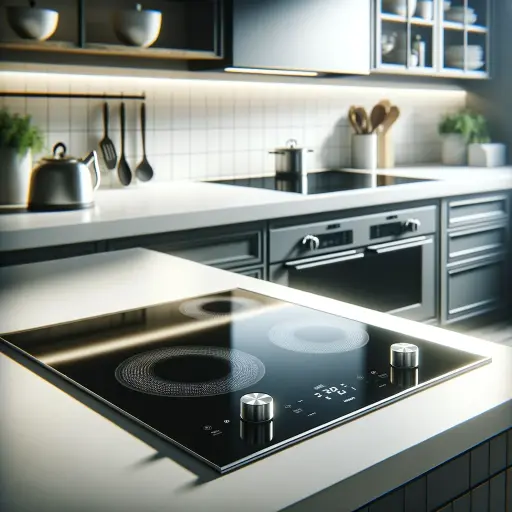
We’ll cover everything from assessing your kitchen’s electrical setup to the final safety checks post-installation. By following this guide, you’ll ensure your new stove not only fits perfectly but also performs optimally, transforming your kitchen into a safe place to cook. Join us as we delve into the essentials of electric stove installation.
Pre-Installation Considerations for Installing Electric Stove
Here are important pre-installation considerations for electric stoves.
Assessment of Electrical Requirements
Voltage and Amperage Requirements:
Electric stoves need a lot of power to operate. Most electric stoves require a power outlet that provides 240 volts, which is different from the usual 120-volt outlet. The amount of electricity the stove uses, measured in amps, usually ranges from 30 to 50 amps depending on the stove.
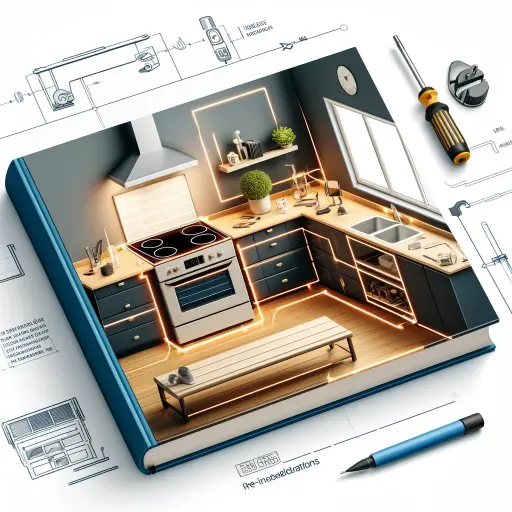
Checking Your Current Electrical System:
Wiring: Check that the wires in your home are thick enough and in good condition to handle the amount of electricity your stove needs.
Circuit Breakers: Your electrical panel should have a special switch, known as a circuit breaker, just for the stove.
Professional Inspection: Because dealing with electricity can be risky, it’s a good idea to have a licensed electrician look over your home’s electrical setup before you install the stove.
Planning for Installation
Importance of Space Planning:
Choosing the right place to put your new stove is very important. It needs to fit well with your kitchen’s layout.
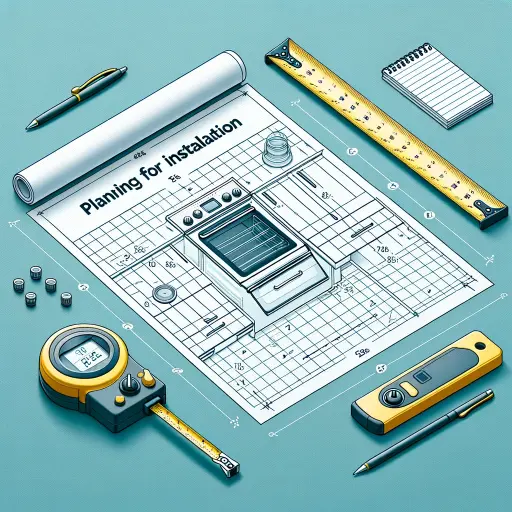
Measures to Ensure Proper Fit:
- Measure the Space: Measure the area where you want to put your stove carefully before you buy it. Make sure the stove’s size will fit in that space.
- Cabinetry Adjustments: If your new stove is a different size than your old one, you may need to change your kitchen cabinets and counters a bit.
- Height and Depth Consideration: Make sure the stove’s height and depth match your counters so it looks nice and easy to use.
Types of Electric Stoves
Here are the different types of electric stoves mentioned below:-
Freestanding Stoves
These stoves can be placed anywhere in your kitchen. They have finished sides and a panel at the back with the controls on it. They’re easy to install and move around but might not blend perfectly with your countertops.
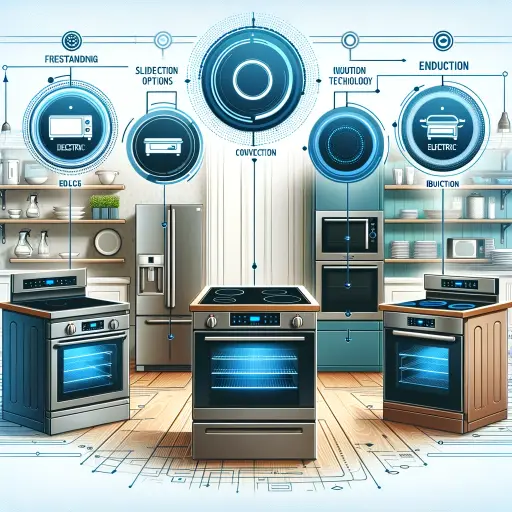
Slide-in Stoves
These fit between your kitchen cabinets and don’t have finished sides. The controls are at the front, giving your kitchen a smoother, more custom look. They overlap slightly with the countertops, which makes cleaning easier.
Built-in Stoves
These are fitted into your kitchen cabinetry and provide a seamless look as if they are part of the cabinets. They look very stylish but can be expensive and hard to install.
To explore more types of electric stoves: https://stovemastery.com/different-types-of-electric-stoves/
Step-by-Step Guide for Electric Stove Installation
Here is the complete guide for electric stove installation:-
Step 1: Unboxing and Preparing for Installation
For the first step of installing an electric stove, the following are the main considerations:
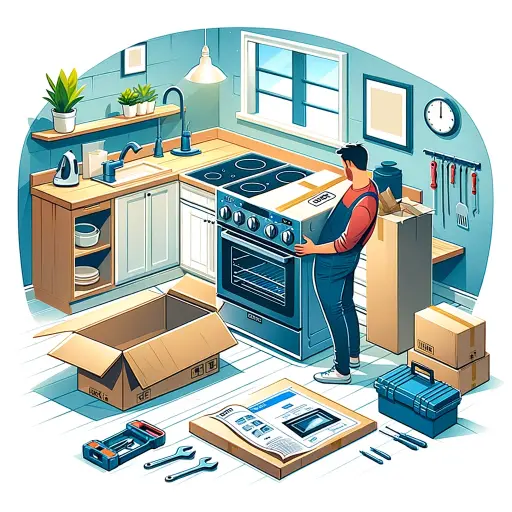
Safety Tips
Clean the Area: Make sure the area where you will install the stove is clean and dry. This helps prevent accidents.
Handle with Care: Be gentle when moving the stove. It’s heavy, so take it slow to avoid hurting yourself or the stove.
Initial Checks
Inspect the Stove: Look over the stove for any damage that might have happened during shipping. If you see any, report it right away.
Check the Parts: Make sure you have all the parts listed in the installation manual. Missing pieces can cause big problems later.
Step 2: Detailed Steps for Setting Up Connections
Wiring
Turn Off Power: Before you start, go to your breaker box and turn off the power to where you’ll install the stove. This is very important for your safety.
Match the Wires: Electric stoves usually need a 240-volt outlet. You’ll see wires of different colors coming out of your wall and the stove. Here’s how to connect them:
- Black and Red Wires: These are your power wires. Connect black to black and red to red.
- White Wire: This is the neutral wire. Connect the white wire from your stove to the white wire from the wall.
- Green or Bare Copper Wire: This is your ground wire. Connect it from the stove to a green or bare copper wire in your wall, or to the grounding system in your home.
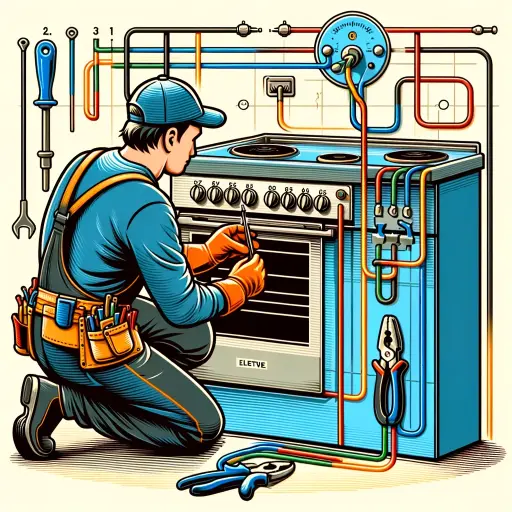
Ensuring Proper Grounding
This step is crucial for preventing electrical shocks. Make sure the green wire (or the bare copper wire) from your stove is connected to the grounding system of your house.
Step 3: Handling Specific Installation Challenges
Adjustments for Cabinets and Countertops
Too Big or Small: If your new stove doesn’t fit the space, you might need to change your counters or cabinets. For a stove that’s too big, you may need to cut some of the cabinets away. If it’s too small, you might use filler strips to cover any gaps.
If Existing Outlets and Wiring are Insufficient for the New Stove:
- If your current outlet isn’t right for the new stove you need to put in a new 240-volt outlet. An electrician should do this job to make sure it’s done safely.
- If the wires in your home aren’t strong enough for your new stove, they need to be replaced with thicker wires that can handle more power. It should be done by a professional electrician.
Step 4: Electrical Setup and Safety Checks for Installation
This is the most important step for installing an electric stove safely.
Ensuring Proper Electrical Connections
Connecting the Stove Safely:
- Turn Off Power First: Always switch off the electricity at your home’s main circuit breaker before you start. This keeps you safe from electric shocks.
- Follow the Manual: Use the guide that came with your stove for detailed instructions on connecting the wires.
- Match the Wires Correctly: Connect wires of the same color to each other—black to black, red to red (for power), white to white (neutral), and green or bare (ground) to green or bare.
Using the Right Gauge of Wire and Circuit Breakers:
- Right Wire Thickness: Make sure the wires are thick enough to handle the electricity the stove needs. The stove’s manual will tell you what thickness is needed.
- Appropriate Circuit Breakers: Your stove should have its own circuit breaker that can handle the amount of electricity it uses. This prevents the electrical system from overloading and possibly causing a fire.
Safety Inspections Post-Installation
Conducting a Thorough Safety Check
Double-check Connections: Make sure all wire connections are secure and correct. Loose wires can be very dangerous.
Look for Any Damage: Check if any wires or parts got damaged during the installation.
Test the Stove: After everything is connected and checked, turn the power back on and test the stove to see if it works as it should.
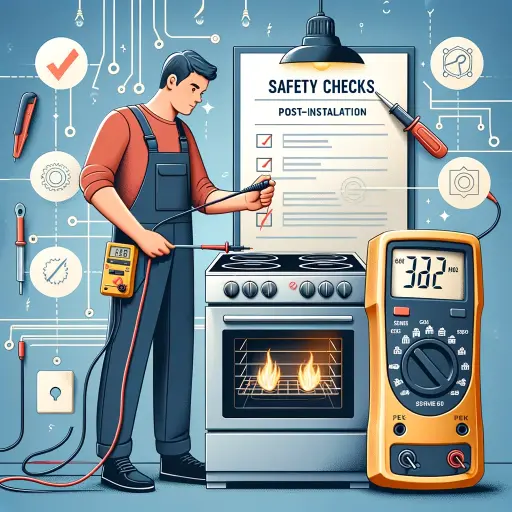
Importance of Having a Certified Electrician Review the Installation
Even if everything seems fine, it’s a good idea to have an electrician look over your work. They can make sure all is done right and safely according to local electrical laws. Having a professional confirm that your installation is correct can make you feel more secure, knowing your stove is safe to use.
Post-Installation Tips for Your Electric Stove
After installing your new electric stove, there are a few things you should do to make sure it works well. Here’s a simple guide on what to do after your stove is installed.
Initial Use and Functionality Testing
Testing the Stove
Start by turning on the stove. Make sure each burner heats up and the oven reaches the temperature you set. Try different settings and features to ensure all functions are operating correctly. This checks that everything is working as it should.
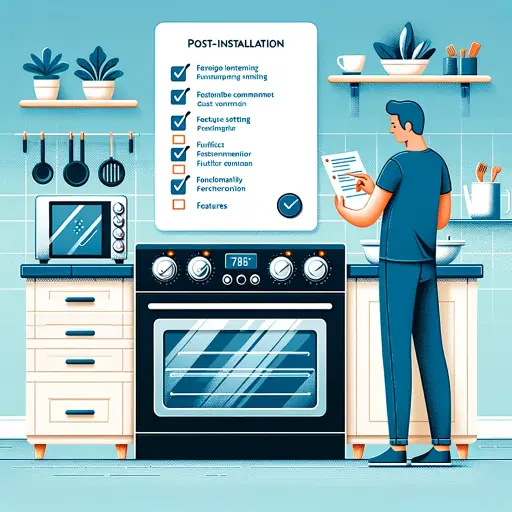
Troubleshooting Common Issues
If a burner doesn’t heat up, make sure it’s properly connected. Sometimes, elements can be loose. If the oven doesn’t seem to heat correctly, check the temperature settings and calibration. Refer to the manual for how to adjust it if needed.
Maintenance and Upkeep
Regular maintenance and upkeep for electric stoves are essential, here are some tips for cleaning bits of advice for its maintenance:-
- Periodically check that all elements and connections are secure and in good condition.
- Look for any signs of wear or damage regularly. Catching issues early can prevent bigger problems later.
- Keep your stove clean by wiping down the surfaces after use. For the cooktop, use cleaners safe for electric stoves to avoid damage.
- Every few months, give your stove a thorough cleaning. This includes taking apart elements that can be cleaned separately, like the oven racks and any removable knobs or burners.
Additional Considerations
Guidelines for Using Built-in Outlets
- Only plug in small kitchen appliances like toasters or blenders into these outlets. Avoid plugging in anything that uses a lot of power, like microwaves or refrigerators.
- Don’t plug in too many things at once. This can overload the stove’s circuit, which might trip a breaker or cause a safety issue.
Tips to Prevent Overloading
- Try to use only one appliance in the outlet at any time.
- Look at your stove’s manual to see the maximum power it can handle and stick to that limit.
Energy Efficiency and Cost Savings
Energy Efficiency
Electric stoves are good at turning electricity into heat without wasting much energy. This makes them more efficient than older or less advanced models. If you have an induction cooktop, it’s even more efficient because it heats up faster and uses less energy.
Tips for Saving Bills
- Always use pans that match the size of the burners. Using a small pan on a large burner can waste energy.
- When you’re cooking, keep lids on your pans as much as possible. This keeps the heat in, so you can cook faster and use less energy.
- Learn to use lower settings when high heat isn’t necessary. It saves energy and is often enough for many cooking tasks.
Conclusion
In this blog post, we’ve talked about how to install an electric stove correctly, covering everything from checking your home’s electrical setup to making sure your new stove is installed safely.
We’ve also shared tips on how to take care of your stove and use its features without causing any electrical problems. Installing an electric stove is important for making your kitchen work better and keeping everything safe.
If you’re thinking about putting in a new electric stove or if you’ve already started, keep these tips in mind to make sure everything goes smoothly. If you’re not sure about something or if you think you need help, it’s a good idea to ask a professional electrician. Feel free to ask questions or share your thoughts in the comments below if you want more information or if you have experiences to share about installing an electric stove.
FAQs
1. Can I install an electric stove by myself?
While it’s possible to install an electric stove yourself if you have some experience, it’s recommended to hire a professional. This ensures that the installation meets safety standards.
2. Are there any signs that my electric stove was not installed correctly?
If your stove isn’t heating evenly, makes unusual noises, or if breakers trip frequently, these might be signs of improper installation. It’s important to address these issues with the help of a professional
3. Can I connect an electric stove to an extension cord?
It is not recommended to use an extension cord with an electric stove due to the high power requirements. Using an extension cord can pose a fire risk and is generally considered unsafe.
Please Write Your Comments